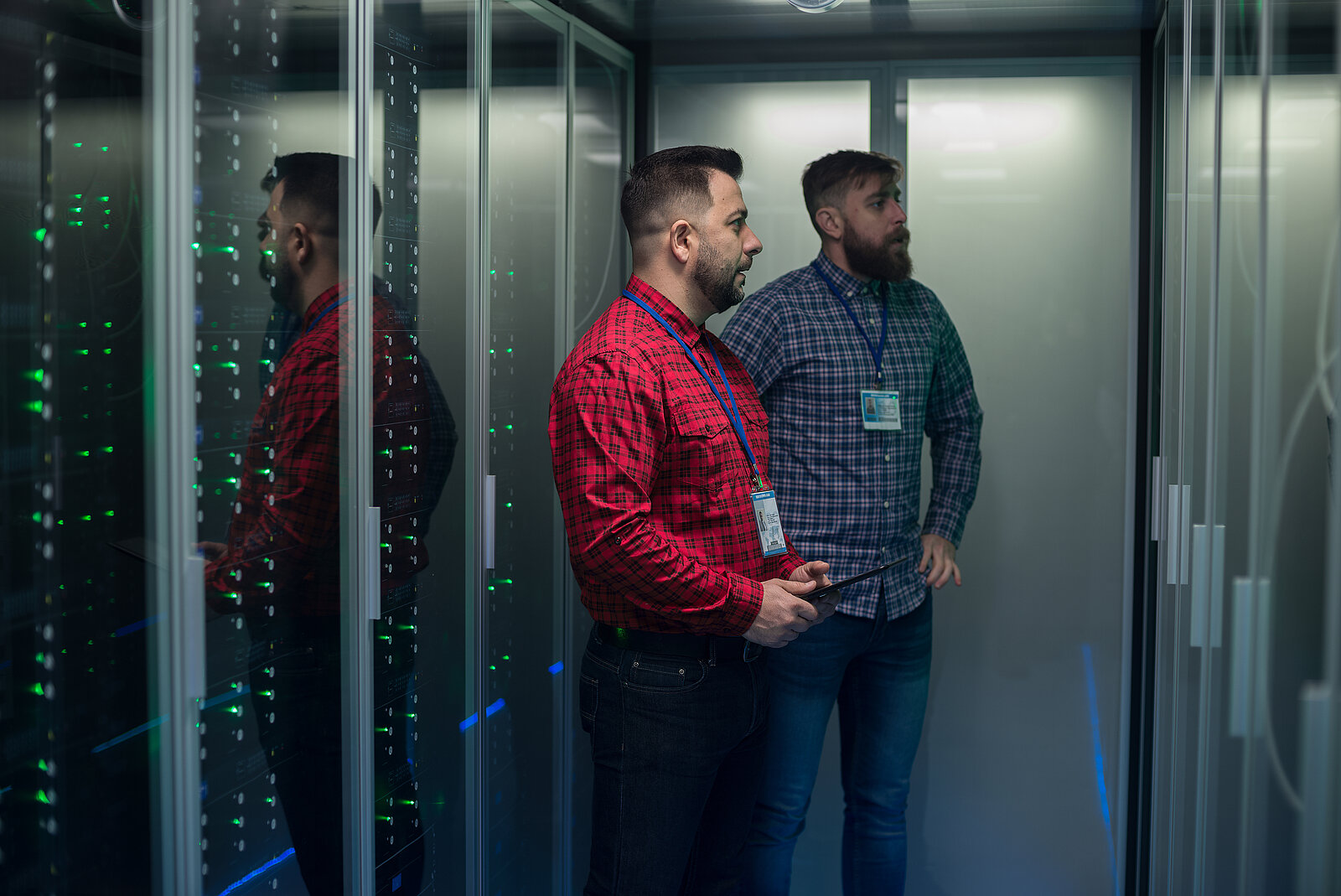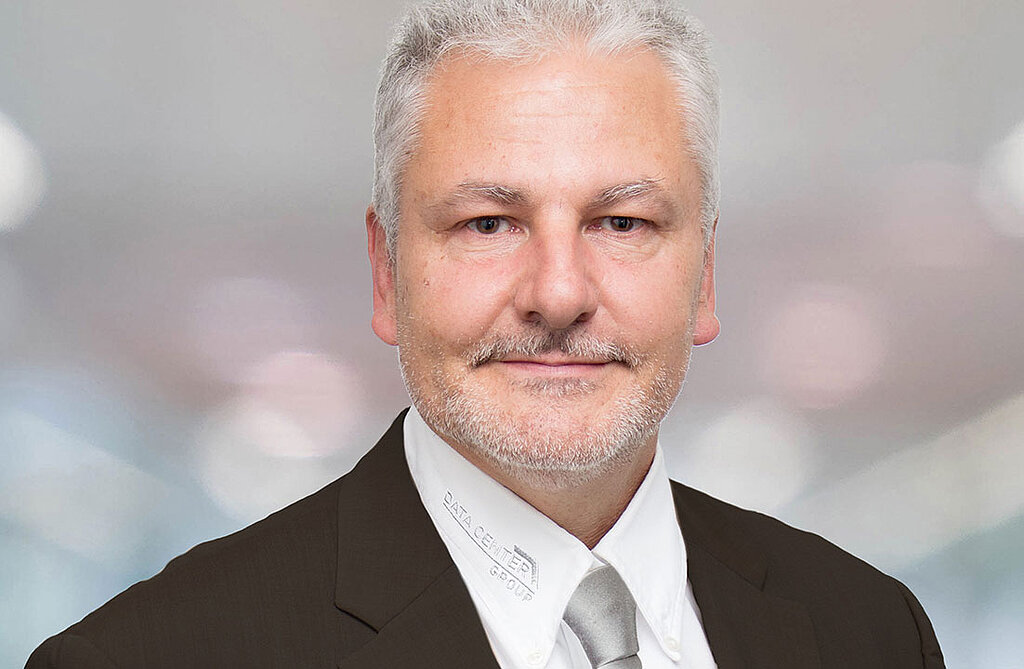Data centers generate considerable amounts of waste heat, which up to now has hardly been used and discharged into the atmosphere. In the coming years, the task will be to make this waste heat usable for the heating sector. In the future, its use can be an important lever for data center operators to achieve greater climate protection, while customers benefit from CO2-free heat.
Barely tapped potential
In the search for sustainable heating solutions from renewable energies, waste heat is considered an important option. In addition to the use of industrial waste heat for heat supply, waste heat from data centers is another potential source. The CO2-free heat generated there can be used to heat office, commercial and residential buildings, save energy and reduce heating costs. At present, however, it is still often released unused into the environment.
Waste heat utilization receives political support
In order to harness the potential of digitization for greater sustainability, data centers in Germany are to be geared toward ecological sustainability and climate protection, partly through the use of waste heat. The coalition agreement between the governing parties provides for this. The current draft of the Energy Efficiency Act (EnEfG) formulates corresponding requirements for data centers. It is expected that new data centers built from 2027 onwards will be required to use waste heat.
Potential of waste heat
Although the efficiency of German data centers has increased six-fold in recent years, their energy consumption continues to rise. The reason is in particular the increasing expansion of cloud services. While the energy requirement in 2012 was still 11 billion kilowatt hours, it has risen to 18 billion kilowatt hours by 2022, according to Bitkom - that is around 0.55 percent of total energy consumption in Germany. According to Bitkom calculations, the use of waste heat from data centers could supply around 350,000 homes a year, which is almost equivalent to the stock in the city state of Bremen.
This potential will continue to rise: By 2030, energy demand is forecast to rise to between 27 and 34 billion kilowatt hours. This means that more and more potential waste heat is available from data centers that has not yet been used.
Air or liquid cooling
Waste heat is generated in data centers during server cooling. Recirculating air cooling, which is heated to around 35 degrees by the waste heat from the servers, still dominates. The circulating air is then exchanged for the medium water via a circulating air cooling unit. This water, which has a temperature of around 25 to 27 degrees, can then be made available for waste heat recovery. In contrast, with liquid cooling - usually with water - the waste heat is usually dissipated directly from the processor (CPU) and other relevant components. The waste heat temperature here can vary between 55 and 60 degrees.
Instead of discharging the heat directly (air cooling) or via a chiller (liquid cooling) to the environment, it could be used for heating or for heating water in buildings by connecting it to a district or local heating network. This usually requires individual solutions.
Temperatures must be raised
The waste heat from data centers cannot be used directly in a district heating network. The temperatures are too low for this. A district or local heating network is usually operated with flow temperatures of 70 to 130 degrees. The temperature of the exhaust air (air cooling) or the hot water (liquid cooling) must therefore be raised with the aid of special, highly efficient heat pumps so that it reaches the level of the heat network and fluctuations in the amount of waste heat are compensated. Liquid cooling offers technically better conditions here, since the heat is already available in liquid form.
Contractor secures long-term heat supply
In order to bring together the different interests (heat producers/heat consumers) in a target-oriented manner, it makes sense to organize the refinement process and the transfer of heat via a contractor who ensures a long-term, continuous supply of heat. Missing heat quantities can be compensated for by appropriate redundancy systems, for example a gas or waste-fired power plant in the case of large heat networks or heat pumps with a different source in smaller local heat networks. This saves the operators of data centers expensive investment costs and allows them to make their waste heat available to customers in an uncomplicated manner. Another advantage is that the contractor also takes care of the necessary maintenance and safety measures.
Solutions for efficient and sustainable waste heat utilization
The Data Center Group, together with its partner companies MVV Enamic and BFE Institute for Energy and Environment, is a competent partner for the climate-friendly and efficient use of waste heat in data centers. As a data center specialist, we use our comprehensive expertise for an energy-efficient and economical use of waste heat and realize the technical interface for the release of waste heat to a customer. BFE is responsible for the holistic consulting of potential users on site. For more than 40 years, the consulting company has been accompanying customers and partners on their way to a climate-neutral supply and showing them ways to achieve greater energy and resource efficiency. MVV Enamic offers business customers holistic energy solutions from a single source, including economical contracting solutions.
Together with its solution house partners, the company supports its customers on their way to a sustainable data center or a sustainable heat supply.
Michael Wörster has been with the Data Center Group since 2017 - initially as a senior consultant, now as a team leader in consulting. With training as an installer in heating construction, further training as a state-certified HLS technician and many years of experience in the field of technical building planning, he has specialized in the planning of data center infrastructures for almost 20 years. He also passes on his expertise as a coach in the field of holistic data center assessment across all trades.
Picture: © Framestock / #249147188 / stock.adobe.com (Standard licence)




